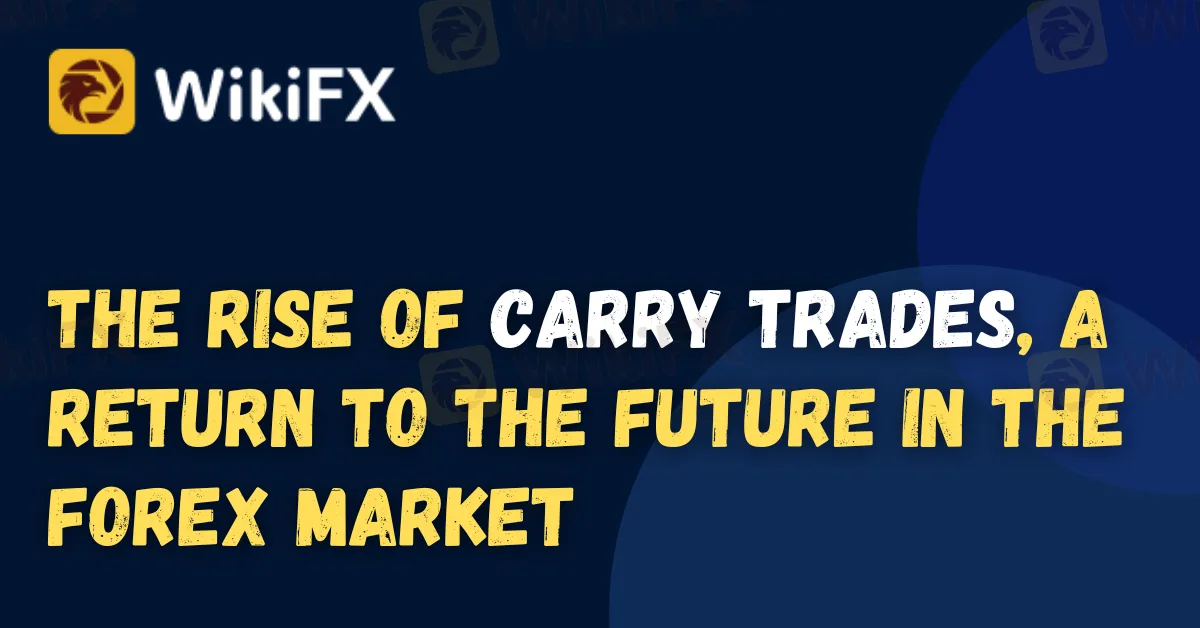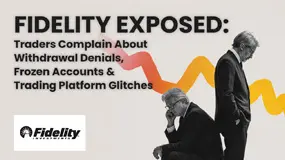简体中文
繁體中文
English
Pусский
日本語
ภาษาไทย
Tiếng Việt
Bahasa Indonesia
Español
हिन्दी
Filippiiniläinen
Français
Deutsch
Português
Türkçe
한국어
العربية
The Rise of Carry Trades, a Return to the Future in the Forex Market
Abstract:Retail FX Brokers may maximize their market making revenue significantly more effectively than A book/B book.

Customers' behavior is set to change dramatically in the FX trading industry, necessitating several modifications on the part of brokers.
Interest rate differentials between USD and JPY were 6%+ for individuals too young to have been in the FX sector before the 2008 Financial Crisis, while differentials between GBP, AUD, and NZD were even larger. There were several clients who just traded to earn the daily rolls. These clients usually utilized 5 to 10X leverage and maintained positions for weeks rather than hours.
Because they had lower leverage, they could hold their positions through most minor movements and were only stopped during significant swings. Interest rate differentials in many pairings meant that there were constantly one-way open positions and a lot more herd-like behavior.
Customers clearly compared brokers based on overnight rollover payments as well as spreads. Carry trading clients often had bigger balances, were older, and were more lucrative than day traders who used more leverage.
Following the financial crisis Except for emerging market currencies, most carry trading vanished when interest rate differentials vanished, although those volumes were a minuscule fraction of what carry trades meant when G7 currencies were engaged.
With individual trader engagement significantly larger in 2022 than in 2007, and interest rates on the rise, carry trades are projected to become the norm in the retail forex market, as they now are among buy-side macro funds. Traditional B-book trading will not work to monetize this flow, thus brokers will need to adapt. It would be crazy not to hedge an investment that would pay out daily interest for weeks or months.
To remain competitive, brokers must provide more equitable rolls to consumers, which involves obtaining more competitive rolls from PBs and PoPs. There will be less two-way flow and many more open jobs.
One advantage for FX brokers will be a rise in the attractiveness of FX as an asset class among more mainstream investors, and FX trading will be a lot simpler to sell when it looks more like a fixed-income investment with greater success rates than day trading. Another significant advantage will be that revenues from nighttime rolls will be much larger as a proportion of total sales than they are now, increasing overall profitability.
The following issues will arise:
Customers' profits from carrying traders, one-way positions, and interest payments will make the B Book obsolete for numerous pairings. This is particularly true in areas where leverage is restricted.
A book flow will be a lucrative but inefficient per transaction. When the herd in bulk is driven out of positions, LPs will enjoy it, but they will choke on big position margin calls, resulting in numerous arguments.
As the FX market will be held prisoner to the vagaries of central bank policy, every econ data item will influence the market, making news trading a big return.
Overall volatility will rise, putting most brokers' too-generous leverage extension policies to the test, as will the possibility of negative balance rises for heavily leveraged traders.
Competitive rolls must be market standard in any FX product, including retail and wholesale.
To grab this business, brokers will need to acquire substantial NOP (net open position) limitations.
As consumers grow more interested in carrying trading methods, emerging market currencies with double-digit rates will become more appealing.
Those that adapt to the new world of trading and do not stick to what worked in the previous 10 years will be the winners in this new era of FX trading. The new PriceOn market-making tool from TTs is ideal for the return to real market-making that this new age will bring in for FX.
Retail FX Brokers may maximize their market making revenue significantly more effectively than A book/B book. Without assuming the risk of a B Book, five to ten times the P/L of an A book may be acquired. Holding inventory risk for minutes rather than hours or days reduces P/L variability dramatically.
Stay tuned for more of Forex News.
Download the WikiFX App from the App Store or Google Play Store to stay updated on the latest news.

Disclaimer:
The views in this article only represent the author's personal views, and do not constitute investment advice on this platform. This platform does not guarantee the accuracy, completeness and timeliness of the information in the article, and will not be liable for any loss caused by the use of or reliance on the information in the article.
Read more

Fidelity Exposed: Traders Complain About Withdrawal Denials, Frozen Accounts & Platform Glitches
Does Fidelity Investments prevent you from accessing funds despite numerous assurances on your requests? Do you witness an account freeze by the US-based forex broker every time you request withdrawal access? Do you struggle with an unstable trading platform here? Is the slow Fidelity customer service making you face forced liquidation? These issues haunt traders, with many of them voicing their frustration on several broker review platforms such as WikiFX. In this Fidelity review article, we have shared quite a few complaints for you to look at. Read on!

Exposing The Trading Pit: Traders Blame the Broker for Unfair Withdrawal Denials & Account Blocks
Did you receive contradictory emails from The Trading Pit, with one approving payout and another rejecting it, citing trading rule violations? Did you purchase multiple trading accounts but receive a payout on only one of them? Did The Trading Pit prop firm refund you for the remaining accounts without clear reasoning? Did you face account bans despite using limited margins and keeping investment risks to a minimum? These are some raging complaints found under The Trading Pit review. We will share some of these complaints in this article. Take a look.

M&G Review: Traders Report Fund Scams, Misleading Market Info & False Return Promises
Applying for multiple withdrawals at M&G Investments but not getting it into your bank account? Do you see the uncredited withdrawal funds out of your forex trading account on the M&G login? Does the customer support service fail to address this trading issue? Does the misleading market information provided on this forex broker’s trading platform make you lose all your invested capital? Were you lured into investing under the promise of guaranteed forex returns? These issues have become highly common for traders at M&G Investments. In this M&G review article, we have echoed investor sentiments through their complaint screenshots. Take a look!

INZO Broker MT5 Review 2025: A Trader's Guide to Features, Fees and Risks
INZO is a foreign exchange (Forex) and Contracts for Difference (CFD) brokerage company that started working in 2021. The company is registered in Saint Vincent and the Grenadines and regulated offshore. It focuses on serving clients around the world by giving them access to popular trading platforms, especially MetaTrader 5 (MT5) and cTrader. The company offers different types of trading instruments, from currency pairs to cryptocurrencies. It aims to help both new and experienced traders. Read on to know more about it.
WikiFX Broker
Latest News
2 Malaysians Arrested in $1 Million Gold Scam Impersonating Singapore Officials
Moomoo Singapore Opens Investor Boutiques to Strengthen Community
OmegaPro Review: Traders Flood Comment Sections with Withdrawal Denials & Scam Complaints
An Unbiased Review of INZO Broker for Indian Traders: What You Must Know
BotBro’s “30% Return” Scheme Raises New Red Flags Amid Ongoing Fraud Allegations
The 5%ers Review: Is it a Scam or Legit? Find Out from These Trader Comments
WikiEXPO Dubai 2025 Concludes Successfully — Shaping a Transparent, Innovative Future
Admirals Cancels UAE License as Part of Global Restructuring
Forex Expert Recruitment Event – Sharing Insights, Building Rewards
Exness Broker Expands in South Africa with Cape Town Hub
Currency Calculator



